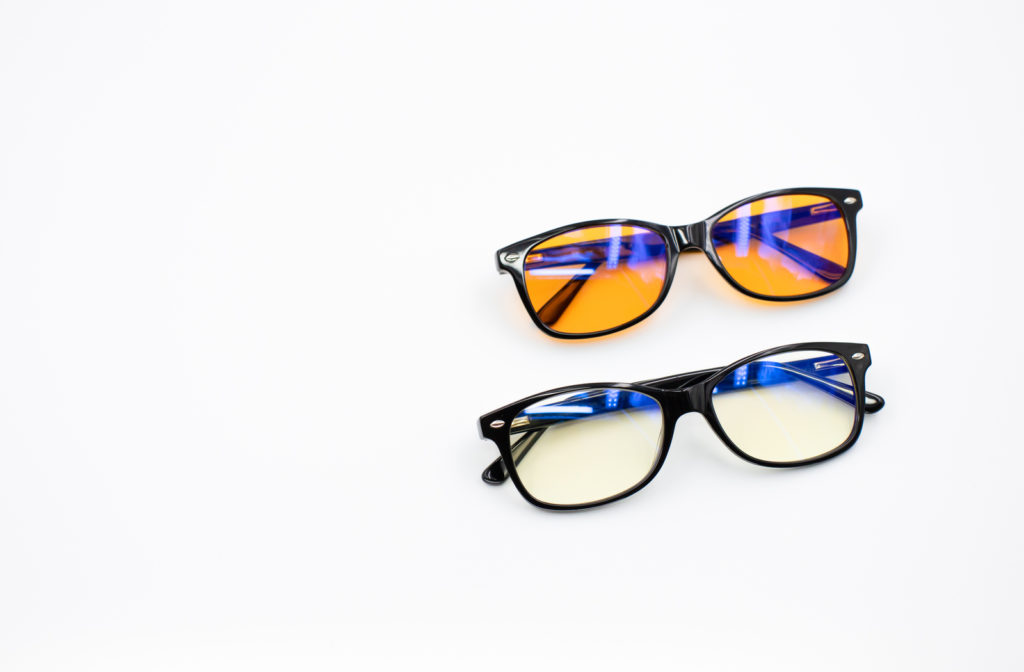In this day and age, it’s easy to be skeptical when it comes to new products and technologies. With an ever-evolving online catalog of things to spend your money on, should blue light glasses be one of them?
Are they simply more fashionable than functional? Or could they become a necessary wearable to help prevent digital eye strain and other potential side effects of long periods of screen time?
What Is Blue Light?
Blue light is everywhere, not just occurring as emission from your digital devices. Researchers have determined that blue wavelengths, at the end of the light spectrum, right before UV, can be beneficial during daylight hours as they tend to elevate mood while boosting attention and reaction times.
Until fairly recently in our evolutionary cycle, humans were only exposed to blue light during the day, however, with the creation of digital devices, artificial lighting came along.
Most of this artificial light is blue, and when we get too much of it at night, it can suppress melatonin, a hormone that regulates sleep cycles. So, if you’re wondering why watching Netflix on your smartphone before bed is keeping you awake, the cliffhanger during a recent episode may not be the only reason.
Do They Look Any Different?
Although some options have yellow lenses, there are also blue light glasses that look very similar to regular prescription pairs. Typically, the more yellow versions tend to filter out more blue light. If you wish, you can have blue light blocking technology added to your current prescription instead of purchasing an entirely different pair of glasses.
With anti-glare coatings and additional magnification available where needed, a stylish pair is relatively easy to find to suit your needs.

Potential Benefits of Blue Light Glasses
Blue light glasses are often associated with 2 main benefits:
- Reduced eye strain
- Better sleep
Although it is difficult to pinpoint exactly why our eyes may feel strained after electronic device use, there doesn’t appear to be clear evidence proving that blue light is the direct cause.
Eye strain may potentially occur from long periods of exposure to digital devices in general, being that many adults are spending an average of up to 11 hours per day with their eyes fixed on screens.
The lenses are also designed to help avoid circadian rhythm cycle disruption, affecting sleep and overall well-being. It is believed that blue light exposure closer to bedtime may be tricking our brains into telling our bodies to stay more alert and awake.
Given that there haven’t been many studies to prove more definite benefits of using blue light glasses, it’s important to understand that they may be a good option for you, if you are experiencing eye strain, or they may not. The only true way to know is to test them out for yourself. Luckily, numerous manufacturers have made them attractive and affordable.
Other Management Techniques
Other techniques can be used to help with digital eye strain, apart from purchasing a pair of blue light glasses. It may be best to work these into your routine to practice eye-friendly screen time. This may include things such as:
- The 20-20-20 method
- Task-specific multifocal
- Eye drops
- Minimize glare
- Upgrade your display
- Adjust display settings
- Blink more often
- Take frequent breaks
The 20-20-20 method is easy to remember and easy to use, it states that for every 20 minutes of screen time, you should look at an object roughly 20 feet away, for 20 seconds. Practicing this, and making other lifestyle adjustments such as taking frequent breaks, and blinking more often can be of immense help when dealing with eye strain.
Task-specific multifocal are specialty glasses that have been modified to suit your needs, in regard to a specific job, task, or hobby. When you meet with your optometrist for a regular eye exam, they will be able to walk you through options once you’ve identified and described the specific needs that you may have for a pair.
It’s important to upgrade your displays where needed, as older display technology such as CRT (cathode ray tube) screens may cause a noticeable “flicker” of images, even if the flicker is imperceptible, it may contribute to your eye strain.
Always remember that display settings for your devices can be adjusted to help as well, this may include changing your phone over to dark mode, or adjusting the brightness, text size, and color temperature to make viewing “easy on the eyes”.
With all of these tools and techniques in mind, it may get a little overwhelming to remember them all. The most important habit to form is to get a comprehensive eye exam with your eye doctor every year.
They know your history, can assess your needs, and help to provide simplified solutions so that you don’t have to guess what may be best for your vision.



